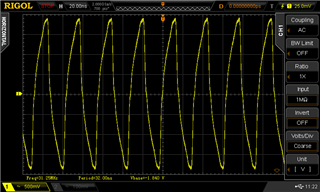I have a design with the mentioned clock generator and we are having no differential output. I would like to have some support on what the issue could be.
The design is the following:
And the internal circuit to what it is connected to is this:
The clock input reference is 31.25MHz and supplies and CE are okey.
I have measured the input clock and I have checked an offset of 3V. Could this be the issue?
Thankyou in advance!







